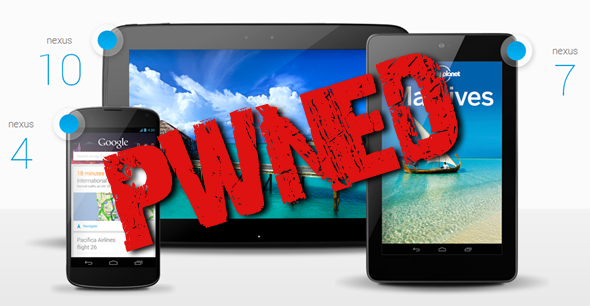Android 4.2.1 Update is barely out the door, bringing with it all the bug fixes and patches, along with the much-needed and missing “December” from the People app. A new version of Android always means one thing in particular – wait time for a new root method or package for the latest update. Well, thanks to the wonderful developer community that we have all come to trust and love, wait is over, or rather, got over long before you knew it, because Android 4.2.1 is also rootable on all the devices – Nexus 4, Nexus 7, Nexus 10 and Galaxy Nexus – just like its predecessor was. The method has no bells and whistles attached to it, either, and involves flashing a custom recovery and pushing the SU binaries to your device. We’ll guide you how just past the jump.
In case you haven’t updated your device to Android 4.2.1 yet, or haven’t received the OTA notification yet, you can manually do so by following our guide here.
Disclaimer
Please note that these instructions, although proven and tested to be safe, are to be followed at your own risk. It’s your device, and you are responsible for whatever you do to it. We cannot be held liable for any consequences.
Requirements
These instructions are viable for Nexus 7, Galaxy Nexus, Nexus 4 and Google Nexus 10, running Android 4.2.1 JOP40D. Make sure you have
- One of the supported devices with an unlocked bootloader
- SuperSU binaries
- ClockworkMod Recovery 6.0.1.9
- Android Debugging enabled on your device
- ADB installed with fastboot
- At least 70% charge remaining on your device
It’s also recommended to backup your data, as a precaution. This method should not wipe anything, but you never know. You can grab the necessary files from one of our previous tutorial’s source link.
Procedure
Step 1: Connect your device to PC and put the SuperSU ZIP package at the root of the internal memory.
Step 2: Place the recovery IMG file at a convenient location on your computer.
Step 3: Reboot your device into bootloader mode, and make sure it is still connected to the PC.
Step 4: Launch a command prompt session, and navigate to where you placed the recovery image. Run the following command:
fastboot flash recovery recovery-clockwork-6.0.1.9-grouper.img
where the last part is the name of the recovery file. If you choose to rename the downloaded file for ease, change the name in the command accordingly.
Step 5: Now, select recovery from fastboot menu, and you’ll be taken to the newly-flashed ClockworkMod recovery. Choose Install ZIP from SD Card, followed by Choose ZIP from SD Card.
Step 6: Point to the SuperSU package and flash it.
Step 7: Once flashing is complete, reboot the device.
That’s it. You now have root access on your Nexus 4, Nexus 7, Nexus 10 or Galaxy Nexus running Android 4.2.1.
You can follow us on Twitter, add us to your circle on Google+ or like our Facebook page to keep yourself updated on all the latest from Microsoft, Google, Apple and the web.

